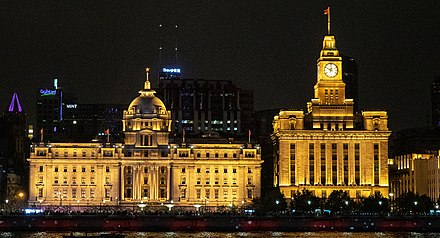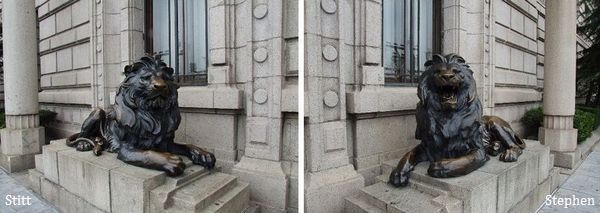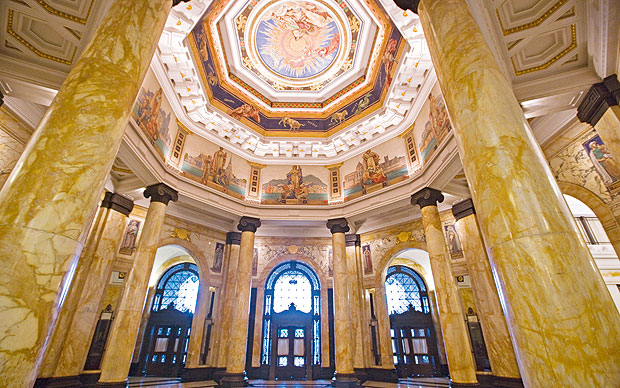
Number 19 on the Bund was originally built as The Palace Hotel, designed by British architect Walter Scott. The Palace Hotel represents the Colonial history of Shanghai’s Bund and its transition into the global and modernized city it is today.
The Hotel was originally constructed during a time when the Shanghai Bund was divided amongst the various colonial powers. Constructed by a British architect, the building served as a representation of British power. This British architectural influence can be seen in the façade of the building, which features many windows as well as Victorian style ornamentation and turrets. The material stood out on the Bund because it was one of the only buildings that featured, and still features, color with a red and white exterior. Two distinguishing elements of the hotel were its rooftop deck, which was rich with greenery and featured a view of the Bund, and having the first elevator in the city. Both of these elements served as representations of the British wealth, power and superiority. (how does the list of the architectural elements stand for “British Power?” for instance, why the windows or victorian ornamentation reflect the power of British empire?)
The building then fell into the hands of the Japanese during WWII. Not much is known about this period of time because the Chinese do not want historical reports of a time when Japan was in control. After the war, the hotel became the Peace Hotel South Building and lived in the shadow of the real Peach Hotel (number 20). It was only recently that the Hotel finally regained an identity of its own (please define what is the “identity of its own).

In 2010, the Hotel renovated it’s interior in order to function as an Artists and Residence named The Swatch Art Peace Hotel. Hotel rooms were converted into dual-functioning studios and apartments for the artists to both live and do art. The residency is free to the artists, and they are only asked to leave a “trace” of what they do during their time there. Since its opening, the hotel has hosted over 250 artists and has built an art collection of over 300 “traces” and 50 donated pieces. (the significance of the transition from a hotel to artists residence?)
Overall, the hotel represents the transition of the Bund from colonial concession through WWII, through a period of rebuilding and then into the modern day. Today, the Bund is a symbol of capitalism, with many of its buildings occupied by banks. The Swatch Art Peace Hotel, however, brings a unique new culture to the Bund. A free Artists and Residence is not the product of capitalism, but rather a new Shanghai that in addition to its capitalist roots, values culture. Therefore, the hotel represents the beginning of a new phase of the city that is striving to match Beijing and other cultural hubs by creating space for art and artists amidst its financial global significance. (incorporation of this paragraph to the previous one will strengthen the issue of transition)
Citation: Qiao, Michelle. “Palace Hotel reigned over city’s most famous road” (2017) https://archive.shine.cn/feature/Palace-Hotel-reigned-over-citys-most-famous-road/shdaily.shtml
https://www.swatch-art-peace-hotel.com/building




